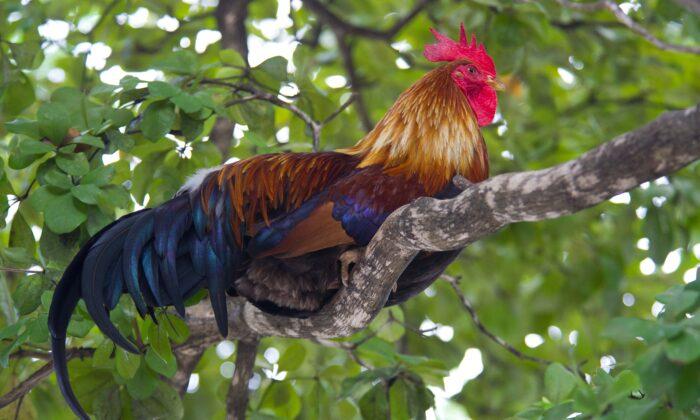State lawmakers have amended a bill that sets guidelines for how California residents can raise roosters, following a hearing in the Assembly Judiciary Committee in which opponents to the proposal said it would have impacted people who breed roosters as a hobby or for conservation.
Assemblyman Chris Rogers introduced AB 928 in February, aiming to prevent roosters from being raised for cockfighting and to help control the avian flu.
Following the committee hearing, Rogers changed his bill “to focus more on the manner in which roosters are kept, rather than only the total number of roosters,” according to a bill analysis.
Cockfighting is the focus of the bill. Although the practice is illegal in California, AB 928 says that it “continues to persist” because of difficulties in determining whether certain birds are being raised and kept for the purpose of fighting them to the death.
Roosters used for cockfighting are specially bred and trained to be aggressive toward other roosters, so they have to be caged or tethered separately from each other.
AB 928 provides exceptions for schools, animal shelters, animal welfare organizations, 4-H, Future Farmers of America (FFA), and people who raise roosters for food production, among other exceptions.
Opponents pushed for changes to the bill’s text during the hearing, expressing concern that the way it was worded at the time would impact people who rescue chickens as well as heritage poultry breeders who raise show chickens.
“In order to have a successful breeding program, with just one breed, multiple males and females are needed,” Donald Barger, a licensed contest judge for the Gold Coast Poultry Fanciers show, said at the hearing. “Many [heritage breeders] have more than one breed that they are trying to maintain.”
Rogers said the environment for raising fowl as a hobby versus for fighting is different, and AB 928 seeks to provide law enforcement officers with a better way of measuring a person’s intention.
Over the past eight years, the three largest cockfighting seizures in the United States were in California, according to Rogers.
“We’re addressing systemic issues before we get there,” Rogers said. “It is like saying that meth is illegal but then still allowing meth to be produced. That’s what we’re doing with cockfighting right now. We’re saying you can’t produce it, you can’t do it.”
The Assembly Judiciary Committee passed AB 928 on April 8 with 10 supporting votes and one opposition.
Rogers said the State Farm Bureau, American Poultry Association, and Humane Society have all worked closely with him and the committees to “refine the language” and advance the legislation.
The proposal has passed two assembly committees and is awaiting review for its potential fiscal impacts.







